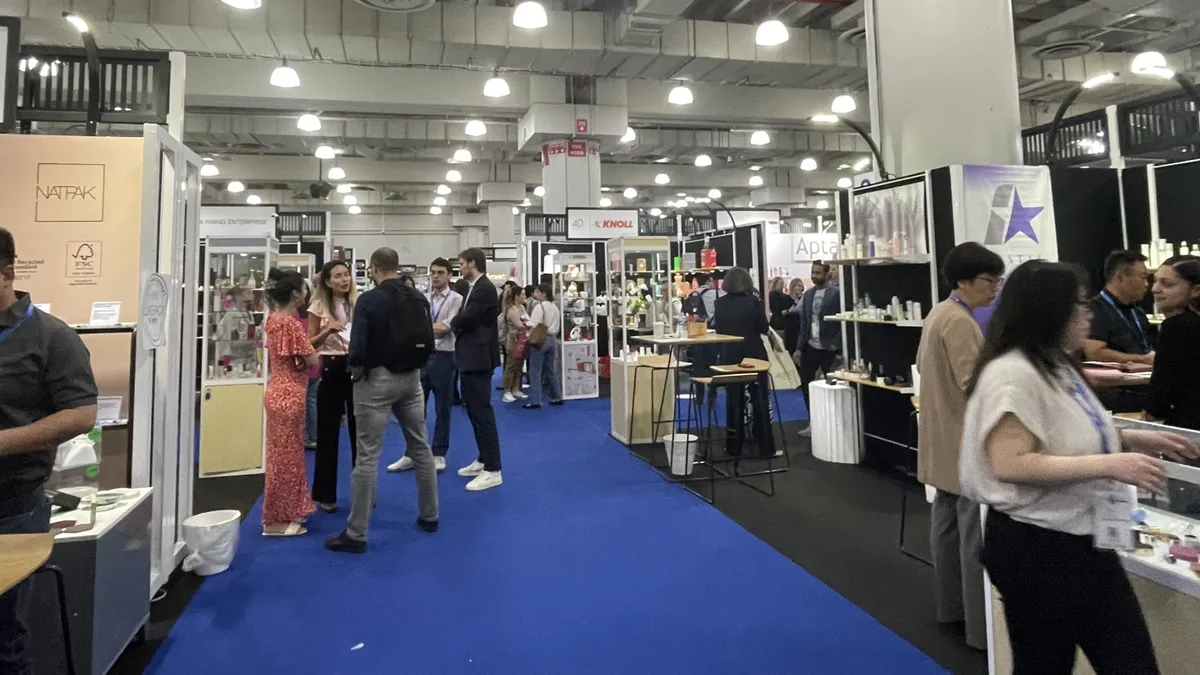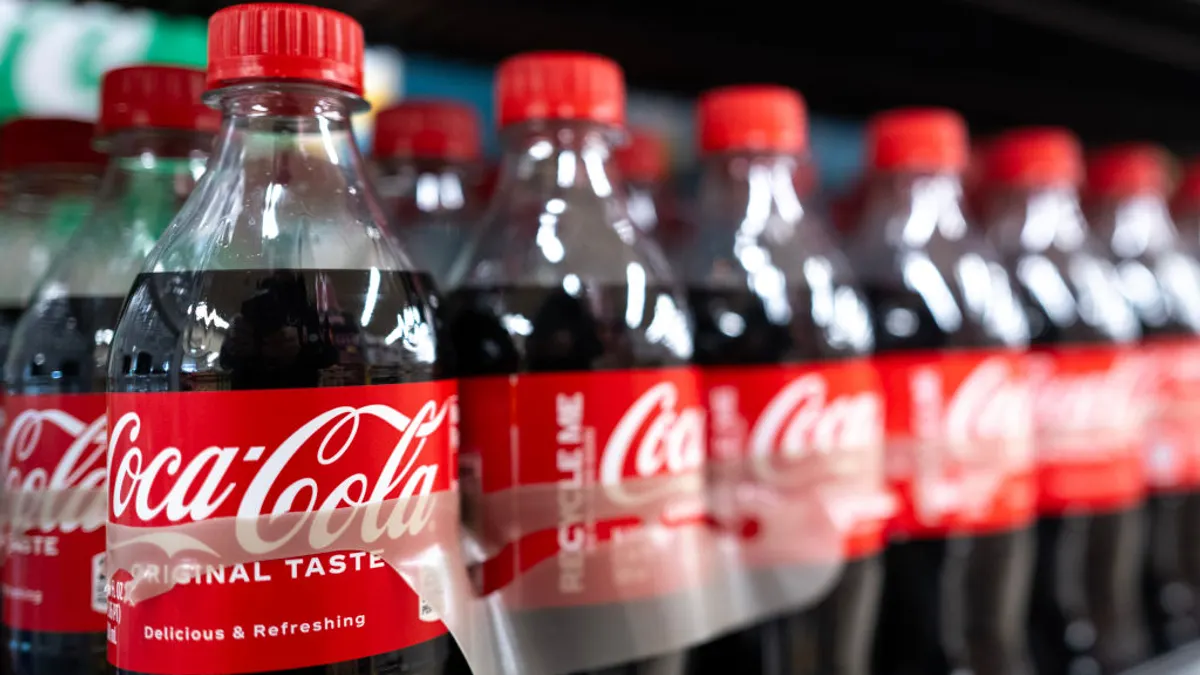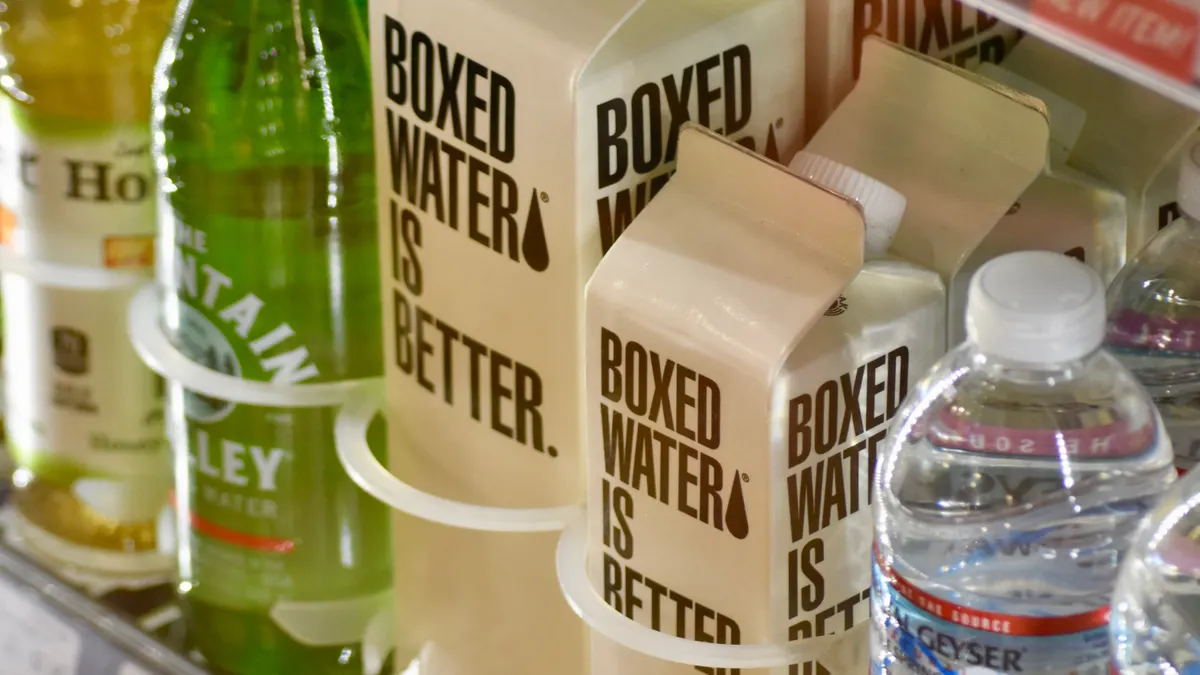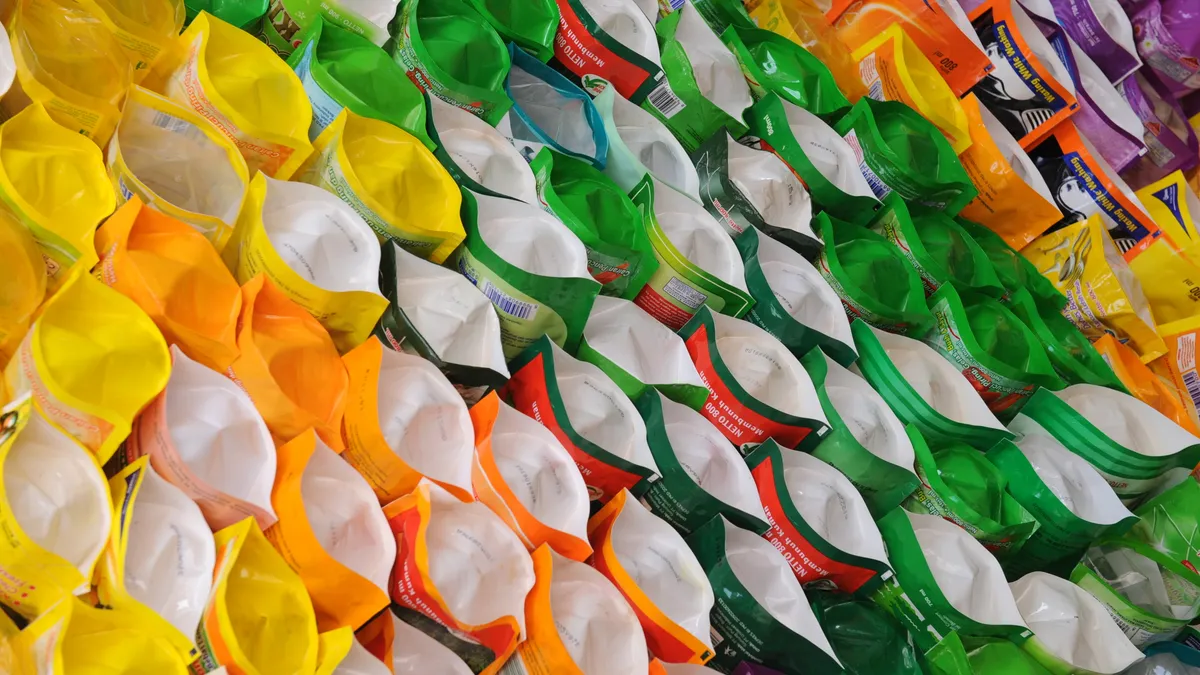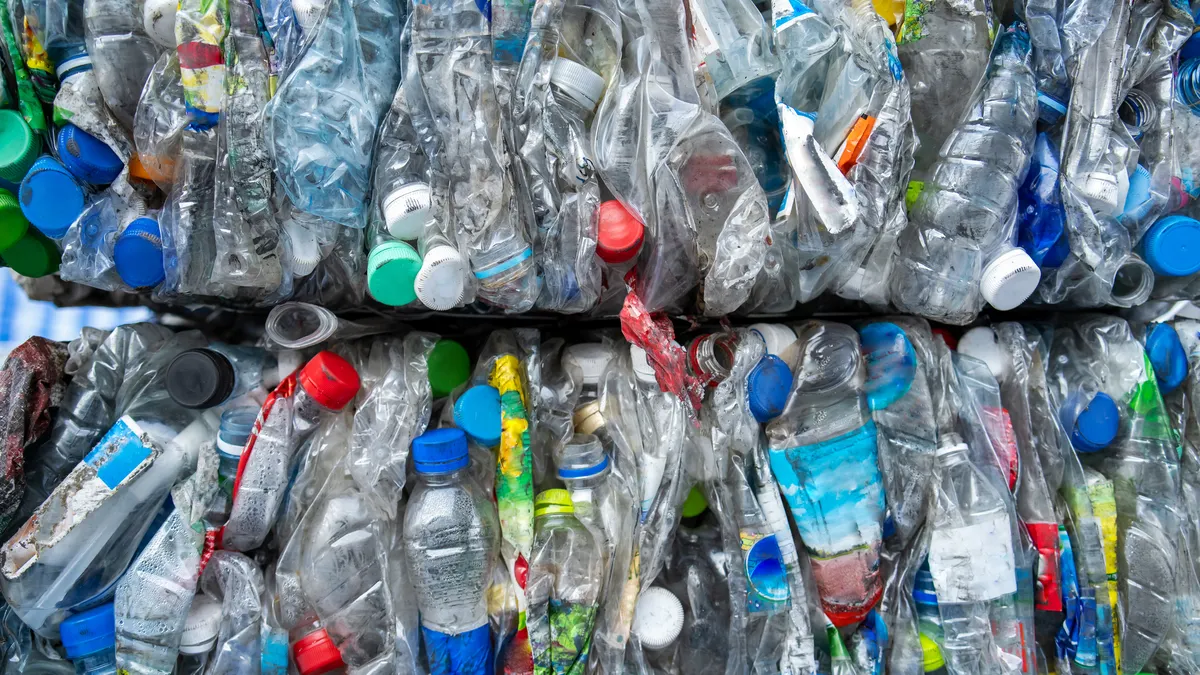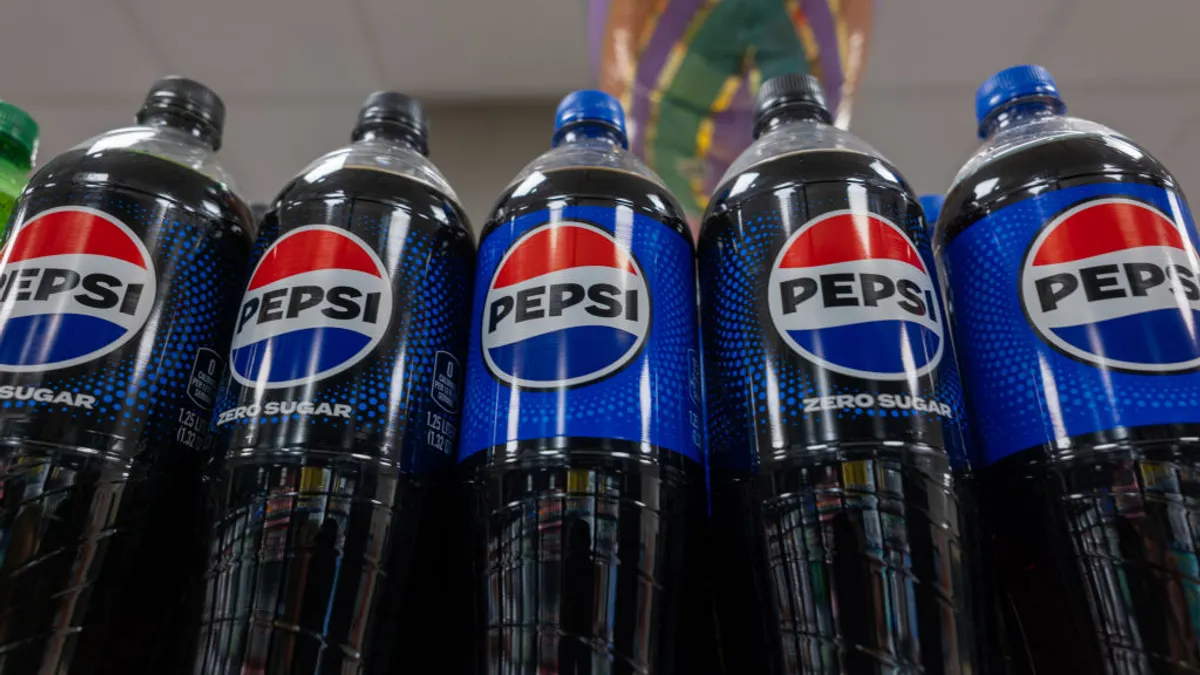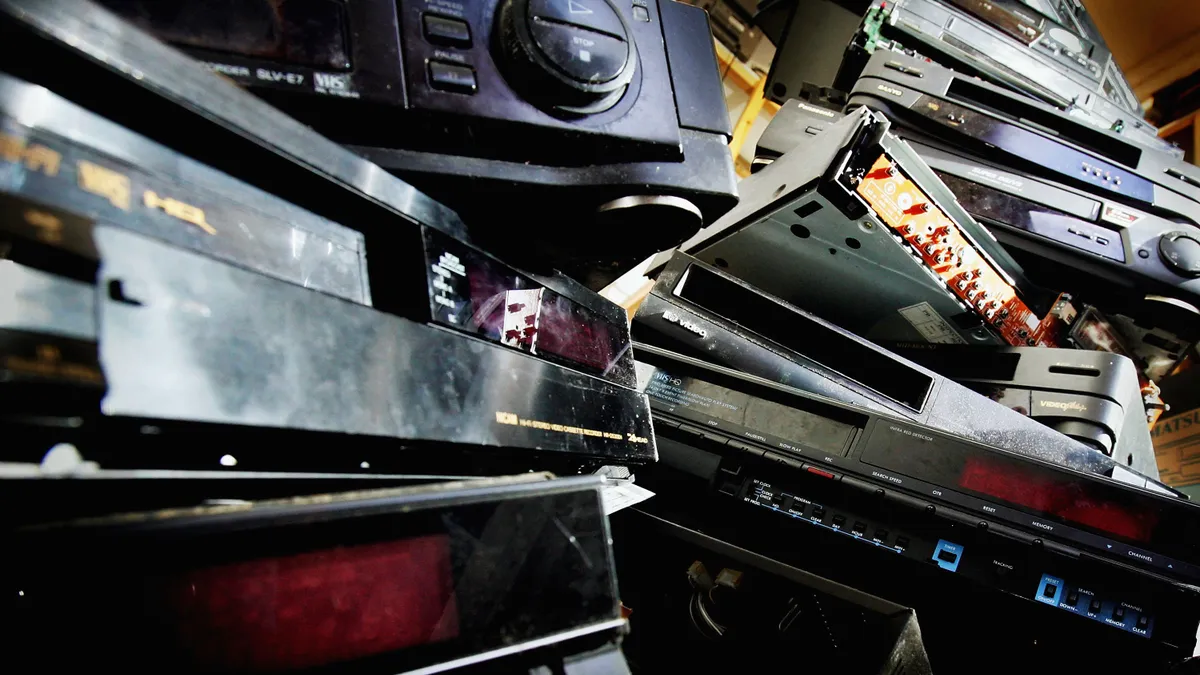Packaging designers, marketers, product developers and sustainability professionals recently gathered in New York for Luxe Pack, a trade show showcasing packaging innovations within the beauty, fashion, wine and spirits industries.
Here are some of the top insights from sessions on high-end packaging’s sensory strengths, multi-use potential and sustainability improvements.
Packaging psychology and sensory purpose
Effectively balancing substance and style is critical for good packaging, said Vicki Strull, a design strategist at Creative Collective. Strull called out the relatable experience of buying a product for the packaging, noting the widely recognizable example of Apple’s sleek design.
Packaging captivates consumers from the moment it hits the shelf by creating a sensory experience, while also protecting a product, according to Strull. In a video during the presentation, Stanford University neuroscientist David Eagleman talked about the importance of touch for the human experience, and said that it allows people to gather information about the world while reducing stress and increasing our sense of connection.
Strull related this to the in-person sensory shopping experience, which frequently involves consumers physically touching packaging and feeling like the object is theirs. This concept, known as “psychological ownership,” then leads to the “endowment effect,” in which customers are willing to pay more for such products.
“Things are more valuable if they have already been drawn to us,” said Strull.
Packaging can also appeal to other senses via music, scent and color, she said. When displaying a product image, it’s important that that color is accurate, Strull said, citing an at-home hair-coloring kit as an example. The color of the product must match the product of the box, and these colors must be consistent across all product touchpoints and retailers nationwide. Otherwise, customers can lose confidence in the brand.
Still, she said, function reigns supreme. A package must safely transport a product from point A to point B, while also holding up decorative aspects like varnishes and embellishments and retaining an aesthetically pleasing design with materials that are easy to dispose or recycle. Packaging is the shopper’s first impression of an item and is ultimately a company’s last chance to make a sale, Strull said.
Packaging rethinks and innovations
Sometimes, packaging is more than just packaging — it can be a multipurpose, sensory product.
Dewi Pinatih, head of product design trends at U.K.-based trend forecasting company Stylus, showcased recent beauty and CPG packaging innovations in a separate presentation. These included a biodegradable bag from “air-purifying” interiors paint brand Gush, and the viral Rhode phone case with a built-in lipstick holder.
Pinatih discussed how brands are luring consumers through multi-use packaging (as with the Rhode case), along with other sleek, portable designs and strategic use of technology. Miniature beauty products, products on keychains, and refillable and multi-use makeup palettes are leading the pack in portability. QR codes are also commonly used to save space on packaging by showing digital instructions or further information about the product.
Captivating formats — those that incorporate sensorial or calming design, aesthetically pleasing color combinations and even experiential products — are also trending. In perfume packaging, this can mean ergonomic tactile packaging in abstract shapes.
Pinatih noted that one of the biggest packaging challenges today is balancing a unique design with a good sustainability profile. For example, a paper box dyed with a colorful gradient can be recyclable but still visually appealing. Designers also need to monitor how finishing processes affect sustainability, because sometimes they can cause a product to not be recyclable.
Pinatih ended her talk by saying that recycling is a universal language and is something that every consumer can achieve with a little effort.
“Everyone wants to do better, but when it comes down to it today, most of the time, it's really not easy,” she said. “Of course, processes vary worldwide. What's nice is to recycle across the world is the same language.”
Defining sustainable packaging in beauty
Sustainable packaging practices are starting to become second nature to beauty brands, said Estée Lauder Chief Sustainability Officer Nancy Mahon.
Diana Verde Nieto, author of the book “Reimagining Luxury: Building a Sustainable Future for Your Brand,” interviewed Mahon about her career in beauty packaging, with a focus on sustainability. Mahon discussed the importance of corporate goals, ESG and the three “R's” that comprise sustainability pledges today: reduce, reuse and recycle.
Mahon, a lawyer who has worked in corporate governance, got her start in beauty nearly 20 years ago by working on MAC’s executive staff. She helped execute the company’s Back-to-MAC program, in which customers could return their empty packaging in exchange for incentives.
“Packaging in a very real way is how our products show up in the world,” she said.
Mahon’s role at Estée Lauder involves collaborating with packaging partners to figure out how to scale sustainable solutions, something she says can be difficult for both large and small brands.
“I really do feel like luxury companies, particularly at this moment in time, have a real responsibility to be leaders in innovation in scaling sustainable solutions,” said Mahon.
Maintaining the look and integrity of a product while keeping costs relatively affordable is a challenge. Mahon noted examples of efforts within Estée Lauder, including fragrance brands Le Labo and Kilian offering refillable models and skin care brand Aveda’s using paper sachets for product samples.
Nieto then asked Mahon about how to prioritize sustainability from a marketing standpoint and how to define innovation in packaging materials. Mahon said that Estée Lauder has recently “doubled down on recyclability,” and recommended that brands focus on replacing virgin plastic with recycled plastic.
Looking ahead, Mahon explained that consumers expect companies to be transparent about their efforts, rather than conceal any negatives.
“We’re entering a kind of new age where it’s not necessarily about the claim on the package, but that this is actually part of the business proposition,” she said


